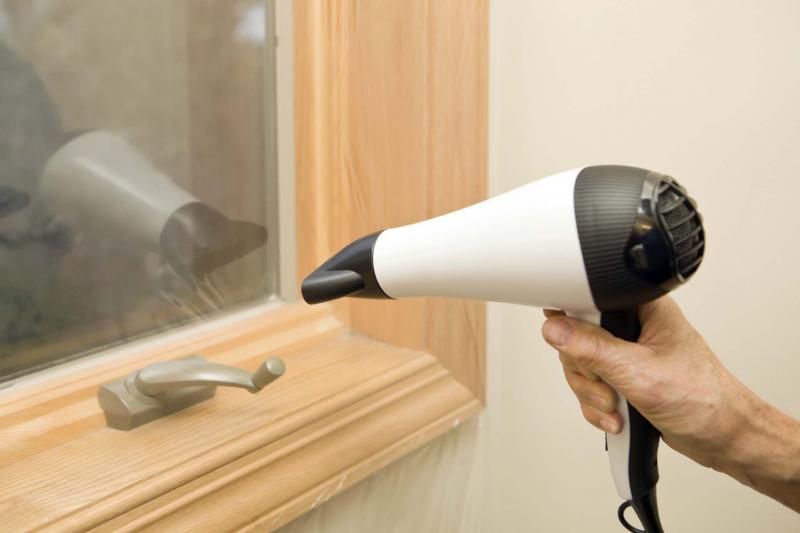QUESTION: In your Free Press article last Saturday, about the cottage guy who wants to use it in winter, both of you mentioned putting a plastic film on the windows for the winter. I was wondering the purpose of this? Thanks
— Jim Caron
Answer: The specific use of home improvement products, often casually discussed in this column, is something that I sometimes take for granted as common knowledge. Temporary clear window films fall directly in this category and its benefits and challenges are definitely something that needs explanation.
There may be specific terminology to properly describe the thin, clear, plastic sheathing that is often used over older windows, but I know as "window film." This name likely derives from the extremely clear appearance, combined with the thinness of this plastic sheathing. It does indeed resemble a thin film-like material, which is often bought in folded sheets or rolls. While it may resemble common kitchen plastic wrap, it is available in much larger sheets to accommodate covering large windows or even patio doors. This material can be easily cut with a utility knife to fit most windows and comes with self-adhesive tape for fastening.
To properly install this material, it should be cut slightly larger than the casing or frame of the window to allow proper fitting.
Self-adhesive, double-sided tape often comes packaged with the film, or can be bought separately. This tape should be installed on the surface of the window trim or frames, overlapping slightly at the corners. Once in place, the backing layer can be removed to expose the second sticky surface. The plastic sheathing is then lined up over this tape and adhered by simply putting pressure on the taped surface. It is not critical to fit this precisely, as the extra material should allow a bit of a fudge factor.
It may seem, when initially adhered, that this plastic sheathing is difficult to apply, as various wrinkles, bubbles and installation imperfections are present. The beauty of this product is that it is a "shrink wrap" material that has a final step to the installation. Following complete, continuous adherence of the plastic to the entire perimeter of the window, a common hair dryer is required to heat the sheathing and remove the wrinkles. This must be done carefully, and only long enough to ensure a taught surface, to prevent melting through the thin plastic. Changes in temperature, over the winter months, may allow some wrinkles to return but the film can be reheated, as long as it remains fully adhered to the double-sided tape.
Now that you know how to install this mysterious sheathing, I can answer your question about its actual purpose. The main reason for installation of the window film is to improve the efficiency and comfort associated with older windows. This can be accomplished by preventing air movement between the outside environment and the inside of the building. Many older windows have poor sealing properties, as well as single or dual pane glazing, which can allow a significant amount of air leakage.
This air leakage may be described as feeling drafty, but can also be warm air leakage from the inside of the building to the exterior. Either way, energy loss can be significant, driving up heating costs and reducing comfort levels.
The main reason to use window film is to make the building warmer and easier to heat for cool weather use. This is useful, whether the use is once or twice a winter, like in the previous column noted, or in the shoulder seasons. Many cottages have only single-pane wooden or aluminum windows, which were not designed for good thermal protection. Reducing the amount of air leaking through the windows may significantly improve the performance of the building enclosure. Installing temporary plastic sheathing over the inside of the windows is a much more cost effective solution than complete replacement with modern, energy efficient units. This is often a recommendation of mine during inspections, as a stop gap solution, before upgrading older basement windows, in particular.
It is important to know that the plastic window film must be removed in the spring, when the weather warms, and normally cannot be reused.
It may be possible to repurpose the sheathing next year, but only on smaller windows than originally applied. The double-sided tape is extremely good at holding the plastic in place, which usually means tearing the clear sheathing to remove it. If it is carefully cut inside the window trim, while still secured, it may be possible to save the smaller pieces for next year’s use on smaller units. The final consideration is the removal of the double-sided tape, which may be tricky. This tape will often lift off the paint or finish on the window or trim when removed. If left in place, it will collect dust and dirt and may prevent proper application of new tape next fall. Make sure that touch-up paint, or other finish, is available to repair areas damaged by tape removal.
In my haste to finish each week’s column, I sometimes forget that some items dismissed as common knowledge are just the opposite, especially on products that are shrinking in popularity.
Clear, plastic window film should still be available at many home and building supply centres but is becoming more scarce, as older windows are being replaced with better quality units and its purpose lesser known.
Ari Marantz is the owner of Trained Eye Home Inspection Ltd. and the past president of the Canadian Association of Home & Property Inspectors — Manitoba (cahpi.mb.ca). Questions can be emailed to the address below. Ari can be reached at 204-291-5358 or check out his website at trainedeye.ca.
trainedeye@iname.com




